Cooking Diary – Log 10 – 11.06.2013 (to 03.07.2013)
It has been only few days (well, :”>) since my last post about Creaming vs. Two-stage method. I kept my word to be here more often, right? 🙂
First, some updates related to food blogging. One thing that is going on with my life is that I am starting (again) to be on a strict low-carb diet (not Atkin, but more like a relative of it). This kind of diet has do wonder for my weight and fat-muscle ratio for the last 6 months, I lost like 10kg (20 pounds).
This “low-carb” however magic they are doing to my body, really frustrated me; since there are not a lot of dishes I enjoy eating while being on diet. As a Vietnamese, I have gotten used to have rice and starches everyday with to-die-for Vietnamese dishes (that mostly seasoned with sugar), and plenty of tropical fruits (which are, also, mostly sweet). The last 4 months I was on diet was the between-hell-and-heaven time for me; my weight and fat kept dropping, by my appetite and thus my passion to cook and bake were also gone. Out of pure heart-broken and stomach-restrained, my body eventually stops responding to this diet. I know I have to find a way to satisfy them both, mind and body, at the same time.
Now, as I started to go strict again, have a new weight goal, I decide that this time I will try to research and explore more delicious, low-carb treats and dishes that can still help me lose fat while pleasing my appetite and my love to cook and bake. Then, I thought, why not share with you guys this interesting journey; I am already all over the place here? 🙂
So I want to open a new category: Low-carb, with 2 main sections: Baking and Cooking. Keep up with me, will you?
To make this a self-commitment, and as a long-lost promise to a friend (sorry, V.A.), I would like to write first a series of fermented low-carb food, starting with Low-Carb Kimchi. Excited?
—————————————–
What is fermented/cultured/cured food? (References to here and here)
Here is a short definition that I found very funny, but not any less true – according to Sandor Katz, author of The Art of Fermentation; fermented foods are “the flavorful space between fresh and rotten.”
Ok, I am no scientist but according to my knowledge, fermentation is the appearance, deliberately or by chance through air – of lactobacillus bacteria (a kind of beneficial microorganisms beat out the kind that can kill you), such as Lactobacillus bulgaricus or Lactobacillus acidophilus, to exposed food, of which the carbohydrates are eventually be eaten up and converted to an organic acid. The results of fermentation are interesting flavors, textures, and smells. In addition, before refrigeration is ever invented, curing meats, pickling vegetables, and clabbering milk was the only way to extend the life of perishables.
Ancient people had consumed fermented (bacteria ridden to be exact because the process did not happen intentionally then) foods for hundreds of thousands of years through forms of rotting fruit, old carcass, unclean fresh meat and vegetation. As the revolution of agriculture, some form of fermented food is a standardized component of the traditional diet, such as fermented milk and drinks in Babylon; fermented, leavened (sourdough) bread in Ancient Egypt and Roman. The list just goes on and on: East and Southeast Asia with natto (fermented soy), Kimchi (fermented cabbage), soy sauce, fermented fish sauce, fermented shrimp paste, to name just a few; Central Asia with kumis (fermented mare milk), kefir, and shubat (fermented camel milk); India and the Middle East with fermented pickles, various yogurts, torshi (mixed vegetables), …
If you are not familiar with any of the names above and think, “OK Rose, I am officially fermentation-free”. Think again please ;), these are various fermented food in our daily life that I am more than 100% sure that you had consumed: Bread, Coffee, Cheese, Chocolate, Beer, Wine, Vinegar, and (don’t be surprised) Vanilla. 😀
Why it is healthy to eat fermented food?
Fermenting foods not only gives them a stronger flavor and enriches their nutrient content; also during the fermentation process, proteins, carbohydrates, nutrients and fats were broken down, making it easier for our body to digest the foods. Furthermore, when you eat fermented foods, you introduce a friendly and helpful bacteria kind, or probiotics (“for life”), into your body’s digestive system. What they do in the fermenting food, they also do in the gut – they fight those harmful bacteria existing there.
So in short, our friendly bacteria are fundamental to good health in so many ways, for example, they: (reference)
- Protect the integrity of the intestinal lining.
- Maintain immunity (since around half of the body’s immune cells are in the intestines).
- Manufacture B vitamins.
- Manufacture essential fatty acids.
- Extract calcium from dairy products.
- Aid absorption of vitamins and minerals.
- Produce enzymes to break down foods.
- Produce butyric acid, required for building colon cells.
- Produce anti-tumor substances.
- Produce antiviral substances.
- Produce anti-fungal substances.
- Prevent candida overgrowth.
- Destroy ecoli, shigella, and salmonella by making the intestinal tract more acidic and by releasing substances such as lactic acid, hydrogen peroxide, and selective antibiotics.
- Neutralize endotoxins produced in the body.
- Neutralize potentially carcinogenic nitrites in the digestive tract.
- Aid the movement of the gut muscles for stool elimination to prevent constipation.
- Get rid of excess cholesterol by breaking down bile.
- Regulate cytokines so as to reduce inflammation.
- Produce anti-cancer isothiocyanates, such as sulfurophane and indol-3-carbinol from foods.
Phew, my brain is tired just by reading this long list of fermented food’s benefits, and you know what, the list still goes on. 🙂
Why fermented food is even better for low-carber?
The main principle of any Low-carb diet is (as the name speaks for itself) to avoid carbohydrate consumption in any case. First on the black list is sugar, in its various forms including white and brown sugar, honey, maple syrup, other natural sweeteners, and even high-sugar fruits. Next on the list would be starches. These include all grains, potatoes and its relatives, and some beans.
Now, to get real guys, pretty much all foods we consume everyday contain carbohydrates though some have much more than others. For instance 100g of chickpea contains more carbs than 100g of lettuce leaf but would be a much, much wiser pick than a piece of butter cake frosted with chocolate buttercream for those restricting their carbohydrates. It is all about choices.
Oddly enough for me, some people on low-carb programs choose to shy away from fermented foods, with fear that this might heighten their carb consumption. This isn’t necessary, really, because the fermentation process actually lowers the carb count in food. Fermentation occurs when bacteria feasts off of the carbohydrates found in a food; in making sourdough bread that food is the flour; in making Kimchi that food is the carbohydrates in the Napa cabbage, in making yogurt that food is the natural lactose in milk. In the fermentation process, the sugars and starches (regular forms of carbohydrates) are eaten up, converted to lactic acid, carbon dioxide, and even more bacteria. Therefore, by definition, fermentation is clearly a way to lower the dietary carbohydrate levels found in various foods.
Though, it is difficult to know the exact carbohydrate count of a fermented food, but there is one principle to keep in mind if you are concerned about the carbohydrates in your fermented foods: “The longer the fermentation time, the more carbohydrates eaten up by the organisms, the more sour the ferment, the lower the dietary carbohydrate count.” So by controlling the culturing, you control the carbohydrates found in fermented foods and in this way you can eat low-carb and still enjoy many fermented foods with all their best to offer. One point for making homemade fermented goodies. Moving on.
In addition, a low-carb diet usually cause people to experience an rather painful changes in the regularity, consistency or appearance of their bowel movements due to the reduction of fiber intake in their daily meals. Fermented food with its probiotic characteristic is surely a lifesaver to help you normalize your intestinal transit and digestion. No more waiting and trying hopelessly in the WC. Pardon my rudeness, true story though.
So, why not give fermented food a try, whether or not you are in a low-carb diet?
What is Kimchi, then?
Kimchi (also spelled “Kimchee”) is a traditional Korean dish that uses the process of fermentation to preserve fresh vegetables. Kimchi is super high in fiber, low in fat, and packed with vitamins, minerals, and good bacteria. Health Magazine named it one of the 5 healthiest foods in the world, and also claim that the average Korean consumes 40 lbs. (20kg) of various Kimchi kinds a year (totally possible if you eat it for side dishes, or breakfast, lunch, and dinner as Korean do.) This fact has marked Kimchi as the most popular dish in Korea.
With its traditional purposes to prepare for the cold winter months when cultivation was practically impossible, Kimchi was first conceived in Korea around the 7th century. At that time, Kimchi was merely a salted vegetable. Yet, throughout the 12th century, with the addition of several spices and seasonings, it grew steadily in popularity. It wasn’t until the 18th century that hot red pepper (imported to Korea) was finally used as one of the major ingredients for making Kimchi.
Kimchi has been around for nearly 3,000 years; it becomes a strong element of Korean culture. When I visited Seoul in 2006 with my Mom on a company outing trip, our Korean photographer even told us to say “Kimchi” when taking a picture, instead of “cheese.” Most importantly, the process of making Kimchi in November is a traditional family-bonding event in which every member participates in making Kimchi, sharing about their life, and having a good time.
As the internationalization goes, Kimchi has become more and more popular within foreign countries. It is a greatly important condiment in Korean cuisine and has helped spread the positive image of the Korean culture all over the world.
How does Kimchi taste like (in case you never had it before)?
Kimchi’s flavor is a very complex combination that varies widely depending on what vegetables and spices used, length of fermentation and the amount of salt and sugar added in different recipes. However, in general, Kimchi will taste:
Sour – Because Kimchi is a fermented dish; it has a prominent sour flavor. Lactic acid produced by bacteria during fermentation creates a distinct tangy, pungent taste.
Spicy – Depending on how much red pepper is used; Kimchi can range from mild to spicy like hell burned all over. The red pepper flakes also give Kimchi its red color.
Umami – Many Kimchi recipes include some sort of fish product whether it’s fermented fish paste, dry fish or anchovies; some recipes I found even have fresh oysters. Fish ingredients give the Kimchi a strong umami flavor.
Salty – The amount of salt used Kimchi varies from recipe to recipe, but the present of salt is irreplaceable.
Sweet – Some varieties are decidedly sweet depending on the amount the fruit (pear, apple) or the sweeteners used.
Garlic & Ginger taste – these two herbs are strong components contributing to the flavor of Kimchi. Their flavors usually intensify during fermentation.
Vegetables – The type of vegetables used to make Kimchi will alter the taste dramatically. A Kimchi made with cabbage might be quite strong whereas Kimchi made with cucumber or radish will be lighter.
—————————————–
My Low-carb Kimchi
Level – Beginner
Time – 15 mins brine preparation + 12 hours first brine + 15 mins chili paste preparation – 15 mins stuffing – 12 hour fermentation (total 45 mins working time + 24 hour waiting)
Yield – 1kg Kimchi for 2-4 people, consumed in a week
Special utensils/ equipment – Basic Kitchen utensil + 3-liter food-grated plastic container + 1 heavy object to submerge the cabbage when brining.
Ingredients
For the brine
- 1 medium-size napa cabbages (about 2 lbs./ 1kg)
- 90g of coarse sea salt
- 1 liter of filtered water
For the chili paste
- 1 white radish and 1 carrots (about 0.5lbs. /200g each)
- ¼ cup of chili pepper flakes (I cannot tolerate intense spiciness so these are just for the color and some flavor; you can add more up to ½ cup to suit your taste)
- 1/3 cup fish sauce (add about ¼ cup first then more or to taste)
- ½ (70g) of apple
- ¼ (30g) of one onion
- 5 gloves (10g) of fresh garlic
- 1 thumb (10g) of fresh ginger
- 3 stalks of scallion or 1 medium stack of leek
- 50g Asian chives
- 1-2 package of your low-carb sweetener (Optional, I used this
Demonstration
Night of Day 1: The initial brine (I start mine at about 9PM)
Step 1: I tend to tear off the rough, green outer leaves of the napa cabbage; those are quite “grown-up” and have distinct smell and not looking all white. You can keep them to use as Kimchi wrap or other purposes if you want. Then, cut the remaining cabbage in half.
Like this.
Step 2: Dilute 80g of sea salt into 1 liter filtered water.

High-quality coarse sea salt (source: http://www.beyondkimchee.com)
NOTE – Salt is the most important ingredients in making Kimchi. I highly recommend to get the highest quality coarse sea salt you could get. Please DO NOT substitute with table salt/Iodized salt because it will make your Kimchi way-too salty, and bitter as well. Not good for our lovely kidneys, isn’t it?
TIP – Leave 10g to sprinkle on stem-end of the cabbage because those are thicker than the leaves.
Keep on sprinkling…
Step 3: Rest the cabbage halves into a clean container. Submerge them totally in the salted water.
Use a heavy object (mine is a pomelo) to keep them under the water the whole time.
Now it is time for our beauty sleep and let the cabbage rest for about 8 hours.
Step 4: OK, good morning sunshine! Once you wake up, test if the cabbage is ready for the next step by bending the stem using your fingers, like this. If your cabbage is very flexible like mine, they are ready.
If yours is still quite crunchy and snap when bended, give them a flip and let rest for another 4 hours.
Step 5: now get them out of the brine. Cutting each in half, again, so that we have 4 quarters in total.
Step 6: Rinse the salted cabbage very well with cold water 3 times, to get them less salty.
Step 7: Squeeze the cabbage quarters with both hands to get rid of the water soaked inside as much as you can.
Let them dry out for about 4 hours; and we are done with the initial brine.
Afternoon of Day 2: Making the chili paste + Fermentation
Step 1: Prepare the vegetable.
Peel the carrots and radishes then cut them them into 2cm thin strips.
Put them in a big bowl and sprinkle them with a spoonful of salt. Then set these aside.
After only 15 minutes, you start seeing them sweating out water and bendable, like this.
Rinse well with cool water to present salty ness, queeze out the exceeded water as much as you can. By doing so, you make sure that your Kimchi is crunchy and can last for longer time.
Chop the scallion/leek diagonally into 2cm stacks.
Peel the onion, garlic and ginger.
Chop the Asian chives into 2cm strips.
Step 2: Making of the low-carb “porridge” – Traditionally, the chili paste has a sticky rice base called “porridge” to stick everything together, but since this is a low-carb recipe, I used half an apple for this. Remove the apple core and cut it into around 2cm cubes, soak them in lightly salted water to prevent browning.
Now add these ingredients into the food processor/blender bowl: apple, fish sauce, garlic, ginger, and onion, white part of the scallion/leek.
Give them a good 1-2 minutes. And there you have, low-carb porridge.
Then add the chili flakes, fish sauce, sweetener sweetener (if you want a hint of sweetness in your Kimchi like I do) to taste.
Stir well.
Step 3: Add the green part of scallion, Asian chives, carrot and radish.
Mix all ingredients well.
Step 4: Are you ready to spread our paste on the leaves and make your very own Kimchi? I suggest that you wear rubber gloves so that you don’t irritate your skin. Mine is fine so I don’t use glove.
Now turn each leaf up and spread the Kimchi paste onto each one of them.
Finally, make a good boule shape out of the cabbage quarter using both hands. Cover them with the reserved outer leaves, if you keep them.
Step 5: Put them into an air- tight sealed food-graded plastic container or glass jar. Arrange them to fit well together to save space. While this sound like a ridiculous advice when working on only one cabbage, it will help you a lot when you doing 5 or 10 at the same time.
Pour your leftover paste/water into the container.
Step 6: Now, wait until it’s fermented. Put the Kimchi container, covered, at room temperature for about 12-24 hours (Vietnam, especially my kitchen, is a hot, hot place, so it won’t take lots of time to ferment Kimchi.
But if yours is on the cold side, you mind want to wait at least 1-2 days before they are ready for consumption.
How do you know it’s fermented or not? Checking them by opening the lid of the Kimchi container, if you see some bubbles with lots of liquids, or maybe sour smells. That means it’s already being fermented.
Now use chopsticks, forks, or whatever is comfortable, to try a bit of the fermented Kimchi, if it is enough sour to your taste. Transfer to the refrigerator to preserve them for later use.
Now, this is purely godsend. 😀 Kimchi is so versatile, you can have it as side dish with steamed rice, cook Kimchi stew, or make Kimchi pancake/pizza (uhmm, pizza sounds awesome), all sort of delicious dishes.
Now to test how beautiful it looks just on it own. I cut one quarter of Kimchi, and just taste it, raw! It tastes so, so good.
You cannot believe that it is low carb.
References
http://www.marksdailyapple.com/fermented-foods-health/#axzz2VsQrjITT
http://www.culturesforhealth.com/low-carb-fermented-foods
http://www.maangchi.com/recipe/napa-cabbage-Kimchi
http://www.savourydays.com/cach-lam-kim-chi/
http://www.beyondKimchi.com/cabbage-Kimchi-or-Kimchi-part-1/
http://www.akealife.com/blueprint-for-life/nutrition/fermented-foods/
http://www.homemademommy.net/2012/09/what-are-fermented-foods.html
http://www.nourishingdays.com/2009/07/the-benefits-of-fermented-food-lacto-fermented-vegetables/
http://greatist.com/health/how-to-make-your-own-DIY-Kimchi
http://visitkorea.or.kr/enu/FO/FO_EN_6_1_2_1.jsp
Hugs from Vietnam,
Rose,

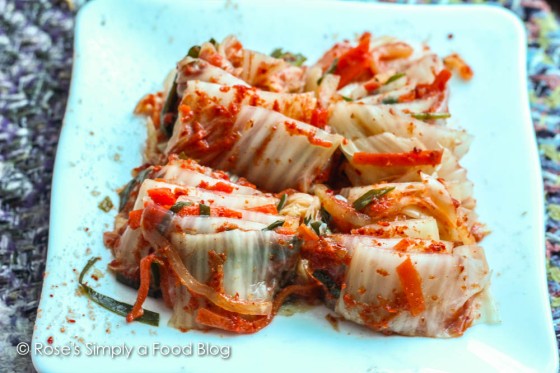
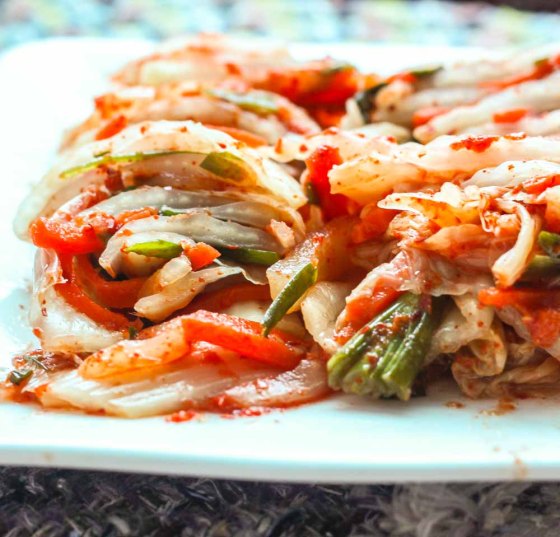
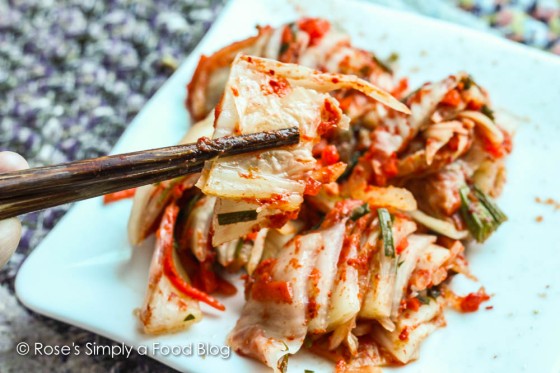
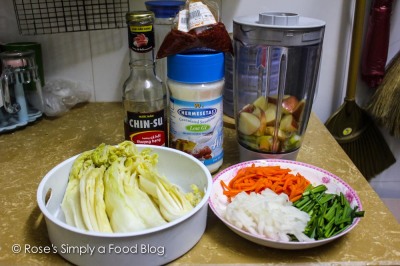
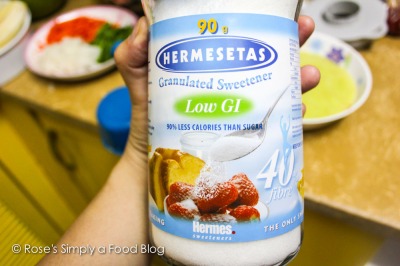
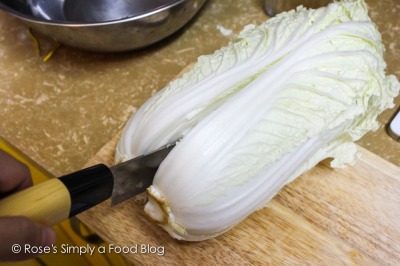
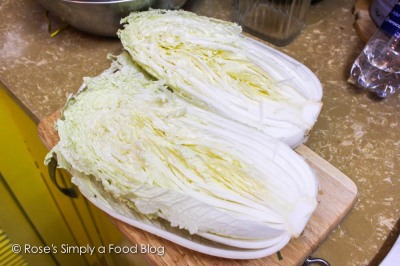
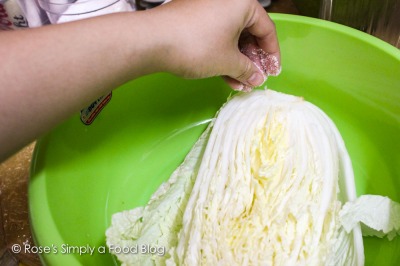


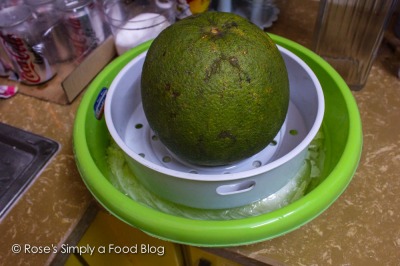
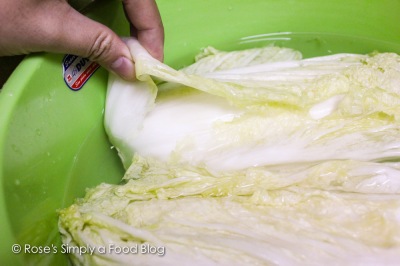
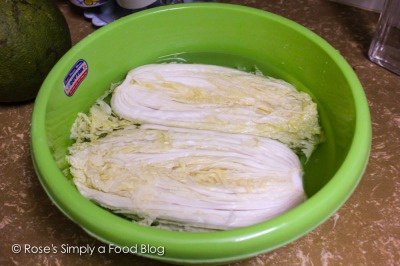
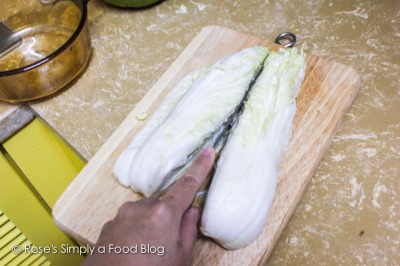
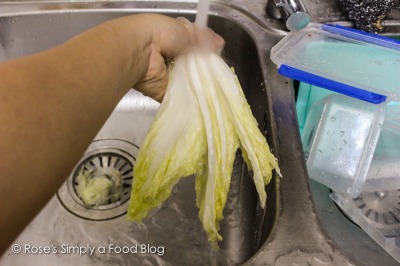
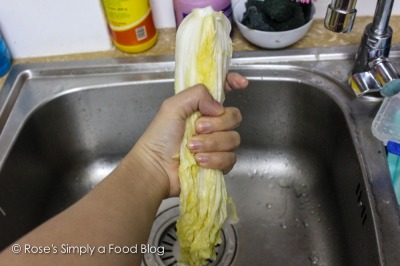
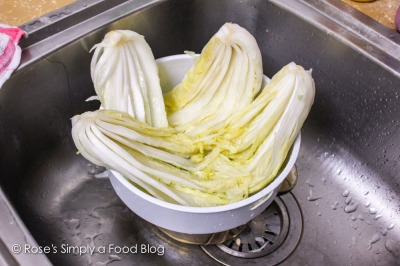
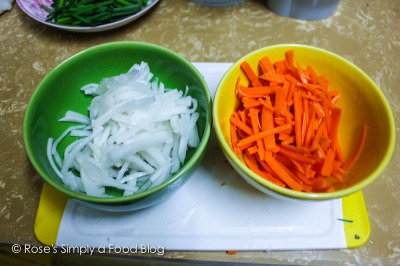

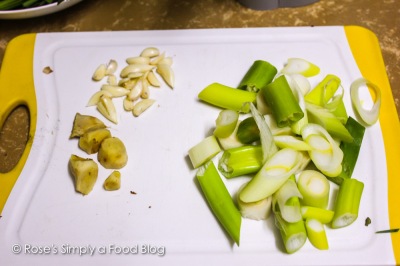
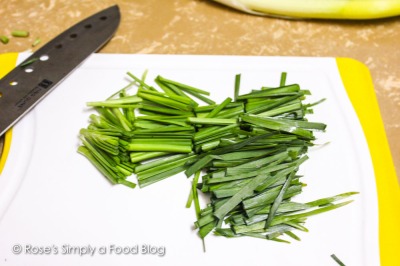
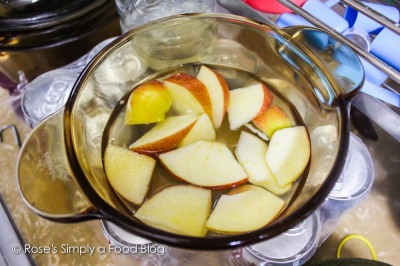

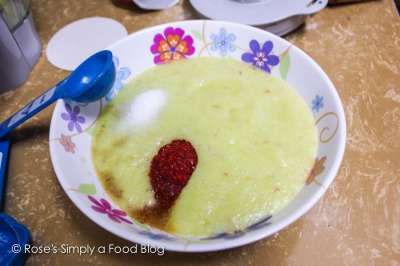
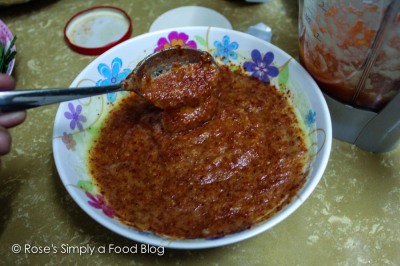
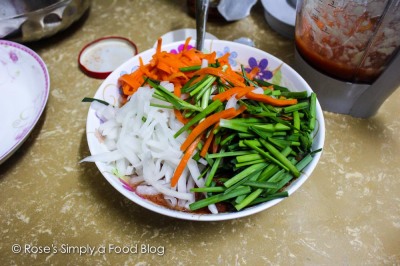
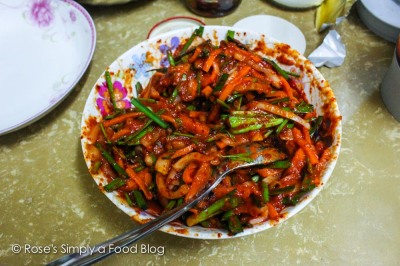
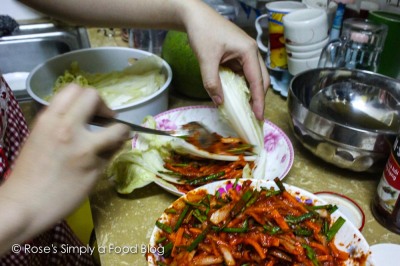
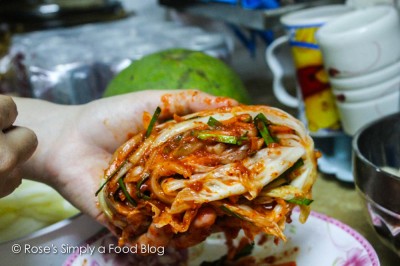
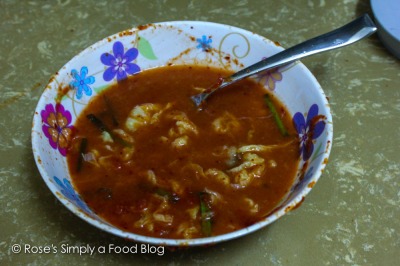
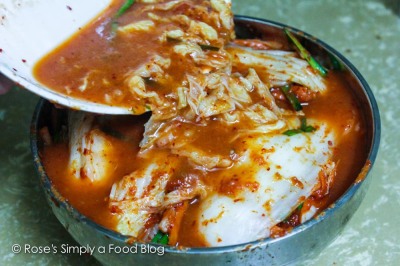
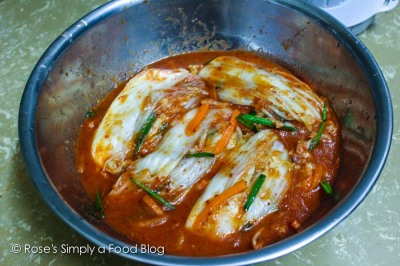
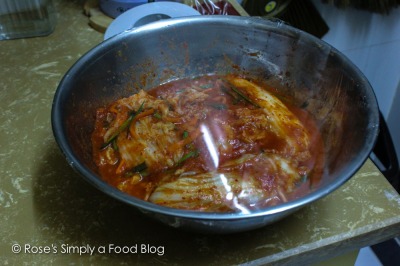
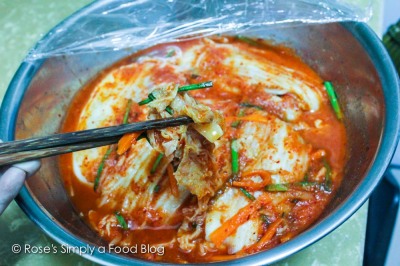
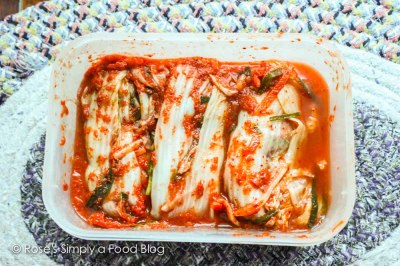
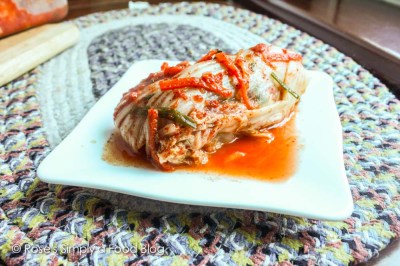
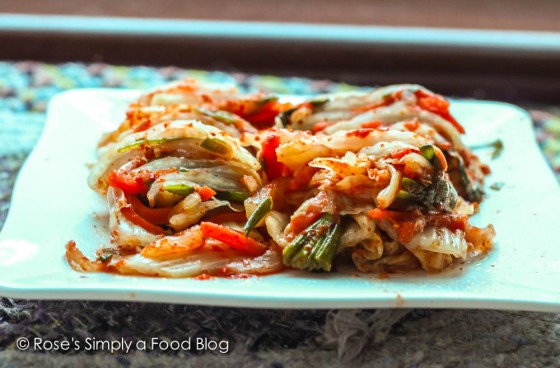

I’m a “senior” and not very tech savvy. I love your blog and am also into both fermentation and lowcarb. Is there a way I can sign up to receive the blog or communicate with you about any of tjis?
LikeLike
Hi Anita, no worries about the tech-savviness. 🙂 Just drop me a line at rose.nhungkieu@gmail.com and we’ll see how to go from there.
Rose.
LikeLike
Pingback: 50th Post Anniversary, YAY! – Omurice (Japanese Fried Rice Omelette) – Food for the Beloved | Simply a Food Blog